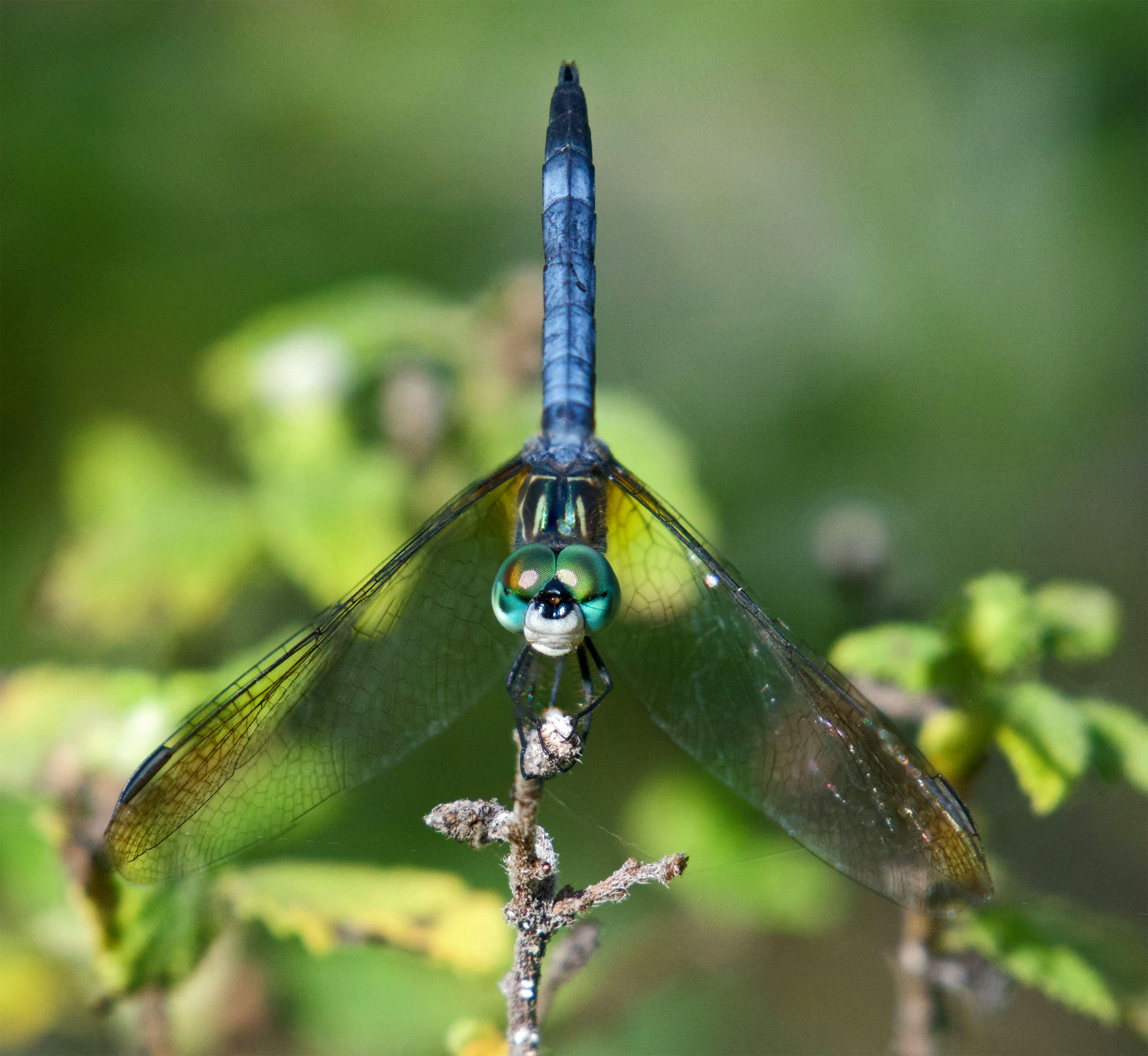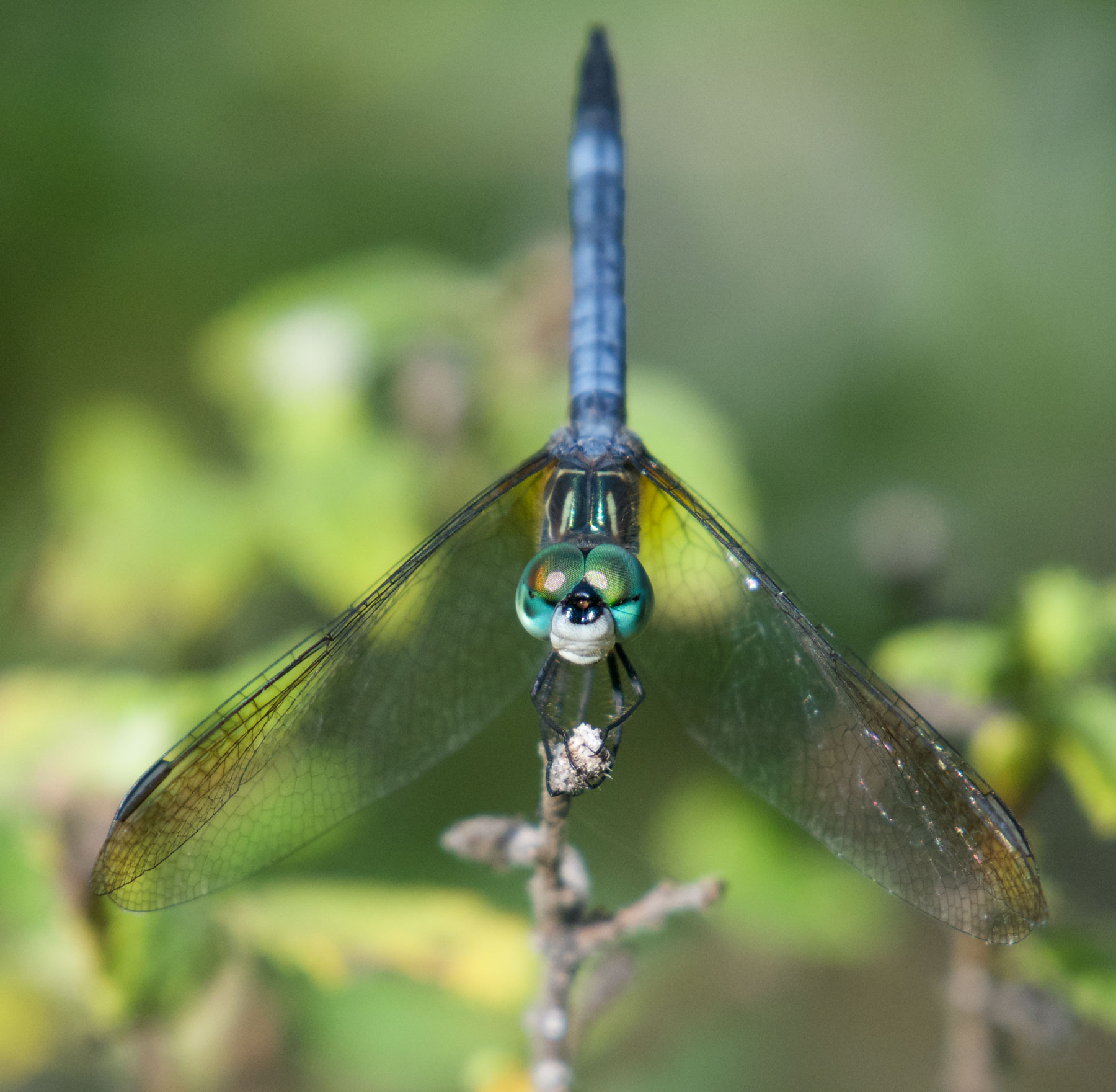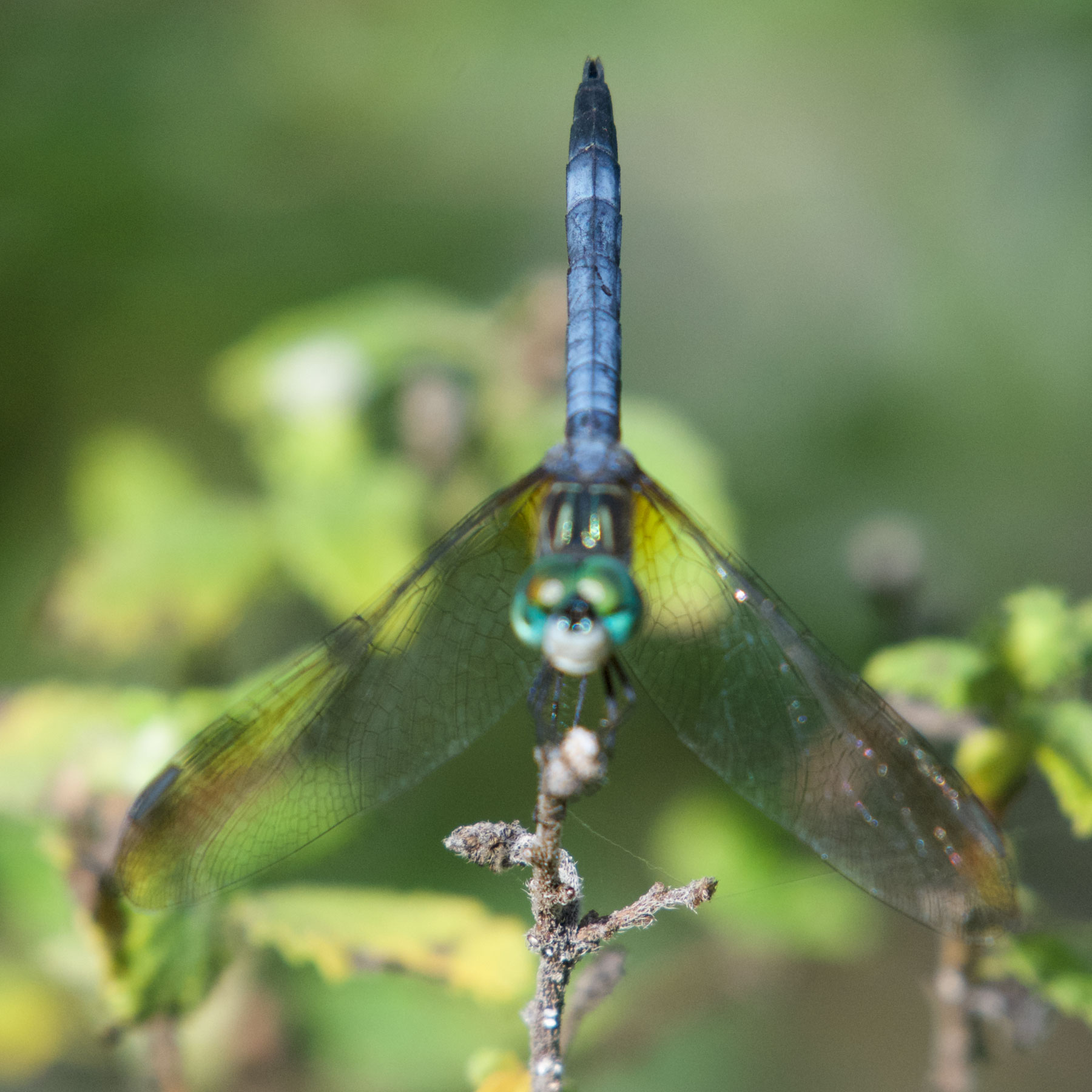One of the challenges of insect photography is depth of field. The focal plane of any camera is flat. Insects are three dimensional. To represent a three-dimensional object in two dimensions requires considerable ingenuity on the part of a lens designer, and considerable work on the part of the photographer. One solution is to take multiple images and stack them, focusing on different parts of the insect in each frame.
Here’s an example of a Blue Dasher, where I was able to get two images with sufficient alignment and sufficiently different focal areas that the resulting image gets most of the bug in sharp focus. Unfortunately, I didn’t get a midrange focus, so the tail of the creature is sharp, as are the eyes, but there’s an area of soft focus halfway down the back:

Still, it’s a much better image than a single-frame capture would allow.
I use a many-years-old version of Photoshop (CS4), but I imagine the process is similar in almost any photo-processing software.
Step one: take a few pictures at different focus points:


Step two: align the images. In Photoshop, this is done by copy-pasting one image onto the other, selecting both layers, then choosing Edit–>Auto-align layers. As long as the previous step (the shooting of the images in the field) was a success, the images should be fairly roughly aligned already. In this case, the software can align them pretty well. I haven’t yet figured out how to rescue a poorly aligned set of images, but it might be possible to place them manually with good precision.
Step three: stack the images. In Photoshop, choose Edit–>Auto-blend layers. Here again, as long as your previous step (the auto-align) was reasonably successful, the stack will be as well. Of course, if your subject has moved slightly, turning its head or shifting a wing, the resulting stacked image will have “ghosts” in it and will have to be discarded.
Step four: save as one image (not a layered file), then you can adjust the colors and highlights, etc., as you normally would. (If you’re clever, you might have adjusted the images before aligning and stacking, but I’m rarely that clever. Plus, if you have 5 or 6 images to blend, that’s a lot of processing that I’d prefer to do in one step on the final, stacked image.)
And that’s “all” there is to it!

Thanks! We are the beneficiaries of your search for excellence.